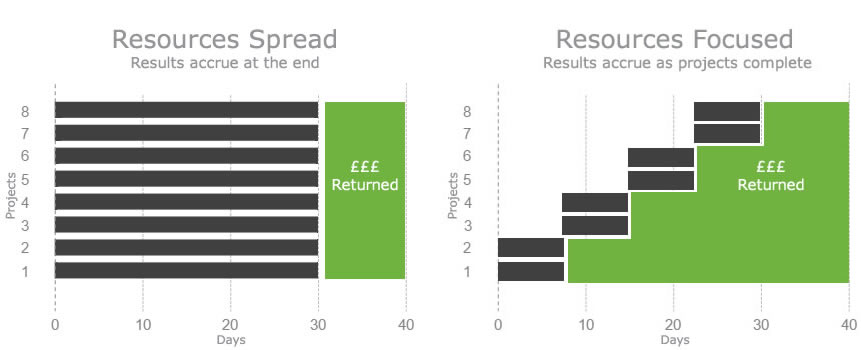- John Wellwood
- June 05th, 2015
The typical manager has a lot to deal with every day. And, in most instances, they don’t know what is going to happen from one day to the next. From HR to customer issues and poor performance or staff complaints, in addition to the planning, strategy and tactical issues in their department, most managers have plenty on their plate.
As a result, managers tend work long hours and have to cope with high stress levels. Higher-ups are constantly asking them to achieve more with fewer staff, fewer resources and smaller budgets, so firefighting is rife.
Wrong focus
Most productivity drives tend to focus on how we can make office and shop floor staff more productive but how can we make one of our most expensive assets, our managers, more productive? With all this firefighting, how can we take even a few hours out of our week in order to change our behaviours and outcomes?
Previously, I’ve talked about how we can make meetings more effective. This is, of course, a key part of any manager’s week, but what other aspects of a managers day to day lives can we make productive and how?
I think it’s the volume of tasks managers work on concurrently. Most managers will try to multi-task; planning for the next month while also managing a staffing crisis and writing notes for a meeting with HR.
However, while it may sound counter-intuitive, if we work on fewer tasks at any one time then we can achieve more. If we work on fewer things we are better able to focus on what we’re doing, resulting in a quicker completion. A quicker completion means the business gains the benefits faster too.
Little’s Law was brought to prominence by John Little who was examining queuing theory. If we apply his logic then the more we work on, the less we complete.
If we work on a large number of things at one time then they all receive small amounts of attention and so it takes longer to achieve the final results. We flit from one half-finished task to another never completing and having to re-establish where we are with the task every time we pick it back up.
There will always be day to day issues which need to be addressed quickly, such as health and safety issues or customer concerns, for example. Now, although we can improve on our productivity in dealing with them, let’s leave them to one side at the moment.
Little’s Law and productivity
It’s the other tasks I want you to think about and examine. If we apply something called Little’s Law we can all benefit from a better understanding of the link between work in progress and lead time. If you make a decision to work on no more than three tasks at any one time you will transform your productivity as a manager. No matter the pressure to start more, if you stick to your guns you’ll find your successful completion rate increase, as will your productivity.
The secret, of course, is to filter the tasks you have to complete and prioritise them so that you take on new tasks as they move higher up the priority list.
If you want to learn more about how Little’s Law can help you to be more productive and better at managing your time, we have short course available that you can complete in your lunch hour!
Managers can become more productive by working on fewer tasks at the same time; prioritise them and then only work on a few and you will see the difference. In our own organisation I have applied this, along with the IT manager and the marketing manager. The results have been amazing; we’ve actually completed things, brought products to market quicker, we have improved customer service and reduced stress.
All managers can be more productive by applying some thought to their daily lives. Productivity improvement is not just for the office or shop floor it is required in every aspect of business.



